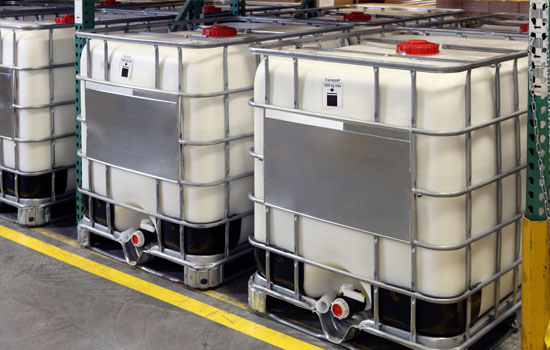Navigating the Global Dental Tourism Market: A Guide for Patients
The global dental tourism industry is set for rapid growth as patients increasingly seek dental care combined with travel experiences. With the rising popularity of medical tourism, the demand for dental tourism is expected to surge, exhibiting a CAGR of 10.70% from 2024 to 2034.
According to healthcare experts at Future Market Insights, the market is projected to be valued at USD 8,812.30 million by 2024. This upward trend is driven by demographic shifts, rising demand for cosmetic dentistry, and the growing appeal of affordable yet high-quality dental care in popular tourist destinations. By 2034, the market is forecast to reach a valuation of USD 31,540.90 million.
In addition, treatment costs in countries such as India, Thailand and China are relatively lower than in the countries of North America and Europe. This reflects an increase in dental tourism from Europe and North America to emerging economies. Obtaining a medical visa for such procedures is comparatively faster and easier, thereby facilitating the flow of patients abroad for treatment.
Promotional strategies such as the launch of online campaigns showcasing cost-effective services from healthcare facilities are contributing to the growth of the market. Providing undivided attention to healthcare and providing affordable accommodation sparks consumer interest in adopting attractive medical-tourism packages, identifying both treatment and recreational choices.
With increasing lifestyle-related diseases and unhealthy dietary intake, the incidence of dental disease is increasing. High prevalence of diseases such as dental caries has led to a spike in dental restoration procedures. Thus, the increasing burden of dental abnormalities is propelling the interest in cosmetic dentistry, creating growth opportunities in the market.
“Increasing adoption of technologically advanced medical devices in emerging economies, along with increasing government-backed investment in the The development of healthcare infrastructure in these countries is expected to drive the market in the coming years,” said an FMI analyst.
Key learning points:
On a services basis, revenue in the dental cosmetics segment will grow at a robust CAGR of 18.1% through 2032.
In terms of providers, the hospital chain segment is expected to account for 47.2% of the total market share by 2022.
India will emerge as a lucrative pocket, accounting for 53.9% of the dental tourism market share in South Asia by 2022.
What are some of the core competencies and differentiating competencies of new entrants and established players in the industry that we analyze?
What are some of the brand opportunities that are developing at a rapid pace?
What are the key competitive forces and elements of the external environment that determine the industry lifecycle stages of most organizations?
Why are some competitive strategies more popular than others among leaders in a particular market?
What customer-based brand value strategies have companies used in a particular industry or set of related industries in an industry?
Competition landscape
With the advancement in cosmetic dentistry, market players are striving to offer these services at affordable prices to gain a competitive advantage. They also invest in mergers, acquisitions and collaborations to expand their global presence. Other strategies include product and service promotions on social media and online channels, as well as partnerships with hospital chains.
A Old Full Report Analysis Click Here
Key Market Segments Covered in Dental Tourism Industry Research
By services:
Dental implants
Periodontology
endodontics
Dental prostheses
Orthodontics
pedodontics
Oral surgery
Dental Cosmetics
Dental Consultation
By travelers:
Occasional travelers
Business travelers
By providers:
Hospital chains
Multi-Specialty Clinics
Independent clinics
By Region:
North America
Latin America
Western Europe
Eastern Europe
South Asia and Pacific
East Asia
The Middle East & Africa
The global dental tourism industry is set for rapid growth as patients increasingly seek dental care combined with travel experiences. With the rising popularity of medical tourism, the demand for dental tourism is expected to surge, exhibiting a CAGR of 10.70% from 2024 to 2034.
According to healthcare experts at Future Market Insights, the market is projected to be valued at USD 8,812.30 million by 2024. This upward trend is driven by demographic shifts, rising demand for cosmetic dentistry, and the growing appeal of affordable yet high-quality dental care in popular tourist destinations. By 2034, the market is forecast to reach a valuation of USD 31,540.90 million.
In addition, treatment costs in countries such as India, Thailand and China are relatively lower than in the countries of North America and Europe. This reflects an increase in dental tourism from Europe and North America to emerging economies. Obtaining a medical visa for such procedures is comparatively faster and easier, thereby facilitating the flow of patients abroad for treatment.
Promotional strategies such as the launch of online campaigns showcasing cost-effective services from healthcare facilities are contributing to the growth of the market. Providing undivided attention to healthcare and providing affordable accommodation sparks consumer interest in adopting attractive medical-tourism packages, identifying both treatment and recreational choices.
With increasing lifestyle-related diseases and unhealthy dietary intake, the incidence of dental disease is increasing. High prevalence of diseases such as dental caries has led to a spike in dental restoration procedures. Thus, the increasing burden of dental abnormalities is propelling the interest in cosmetic dentistry, creating growth opportunities in the market.
“Increasing adoption of technologically advanced medical devices in emerging economies, along with increasing government-backed investment in the The development of healthcare infrastructure in these countries is expected to drive the market in the coming years,” said an FMI analyst.
Key learning points:
On a services basis, revenue in the dental cosmetics segment will grow at a robust CAGR of 18.1% through 2032.
In terms of providers, the hospital chain segment is expected to account for 47.2% of the total market share by 2022.
India will emerge as a lucrative pocket, accounting for 53.9% of the dental tourism market share in South Asia by 2022.
What are some of the core competencies and differentiating competencies of new entrants and established players in the industry that we analyze?
What are some of the brand opportunities that are developing at a rapid pace?
What are the key competitive forces and elements of the external environment that determine the industry lifecycle stages of most organizations?
Why are some competitive strategies more popular than others among leaders in a particular market?
What customer-based brand value strategies have companies used in a particular industry or set of related industries in an industry?
Competition landscape
With the advancement in cosmetic dentistry, market players are striving to offer these services at affordable prices to gain a competitive advantage. They also invest in mergers, acquisitions and collaborations to expand their global presence. Other strategies include product and service promotions on social media and online channels, as well as partnerships with hospital chains.
A Old Full Report Analysis Click Here
Key Market Segments Covered in Dental Tourism Industry Research
By services:
Dental implants
Periodontology
endodontics
Dental prostheses
Orthodontics
pedodontics
Oral surgery
Dental Cosmetics
Dental Consultation
By travelers:
Occasional travelers
Business travelers
By providers:
Hospital chains
Multi-Specialty Clinics
Independent clinics
By Region:
North America
Latin America
Western Europe
Eastern Europe
South Asia and Pacific
East Asia
The Middle East & Africa
Navigating the Global Dental Tourism Market: A Guide for Patients
The global dental tourism industry is set for rapid growth as patients increasingly seek dental care combined with travel experiences. With the rising popularity of medical tourism, the demand for dental tourism is expected to surge, exhibiting a CAGR of 10.70% from 2024 to 2034.
According to healthcare experts at Future Market Insights, the market is projected to be valued at USD 8,812.30 million by 2024. This upward trend is driven by demographic shifts, rising demand for cosmetic dentistry, and the growing appeal of affordable yet high-quality dental care in popular tourist destinations. By 2034, the market is forecast to reach a valuation of USD 31,540.90 million.
In addition, treatment costs in countries such as India, Thailand and China are relatively lower than in the countries of North America and Europe. This reflects an increase in dental tourism from Europe and North America to emerging economies. Obtaining a medical visa for such procedures is comparatively faster and easier, thereby facilitating the flow of patients abroad for treatment.
Promotional strategies such as the launch of online campaigns showcasing cost-effective services from healthcare facilities are contributing to the growth of the market. Providing undivided attention to healthcare and providing affordable accommodation sparks consumer interest in adopting attractive medical-tourism packages, identifying both treatment and recreational choices.
With increasing lifestyle-related diseases and unhealthy dietary intake, the incidence of dental disease is increasing. High prevalence of diseases such as dental caries has led to a spike in dental restoration procedures. Thus, the increasing burden of dental abnormalities is propelling the interest in cosmetic dentistry, creating growth opportunities in the market.
“Increasing adoption of technologically advanced medical devices in emerging economies, along with increasing government-backed investment in the The development of healthcare infrastructure in these countries is expected to drive the market in the coming years,” said an FMI analyst.
Key learning points:
On a services basis, revenue in the dental cosmetics segment will grow at a robust CAGR of 18.1% through 2032.
In terms of providers, the hospital chain segment is expected to account for 47.2% of the total market share by 2022.
India will emerge as a lucrative pocket, accounting for 53.9% of the dental tourism market share in South Asia by 2022.
What are some of the core competencies and differentiating competencies of new entrants and established players in the industry that we analyze?
What are some of the brand opportunities that are developing at a rapid pace?
What are the key competitive forces and elements of the external environment that determine the industry lifecycle stages of most organizations?
Why are some competitive strategies more popular than others among leaders in a particular market?
What customer-based brand value strategies have companies used in a particular industry or set of related industries in an industry?
Competition landscape
With the advancement in cosmetic dentistry, market players are striving to offer these services at affordable prices to gain a competitive advantage. They also invest in mergers, acquisitions and collaborations to expand their global presence. Other strategies include product and service promotions on social media and online channels, as well as partnerships with hospital chains.
A Old Full Report Analysis Click Here
Key Market Segments Covered in Dental Tourism Industry Research
By services:
Dental implants
Periodontology
endodontics
Dental prostheses
Orthodontics
pedodontics
Oral surgery
Dental Cosmetics
Dental Consultation
By travelers:
Occasional travelers
Business travelers
By providers:
Hospital chains
Multi-Specialty Clinics
Independent clinics
By Region:
North America
Latin America
Western Europe
Eastern Europe
South Asia and Pacific
East Asia
The Middle East & Africa
0 Reacties
0 aandelen
1K Views
0 voorbeeld






